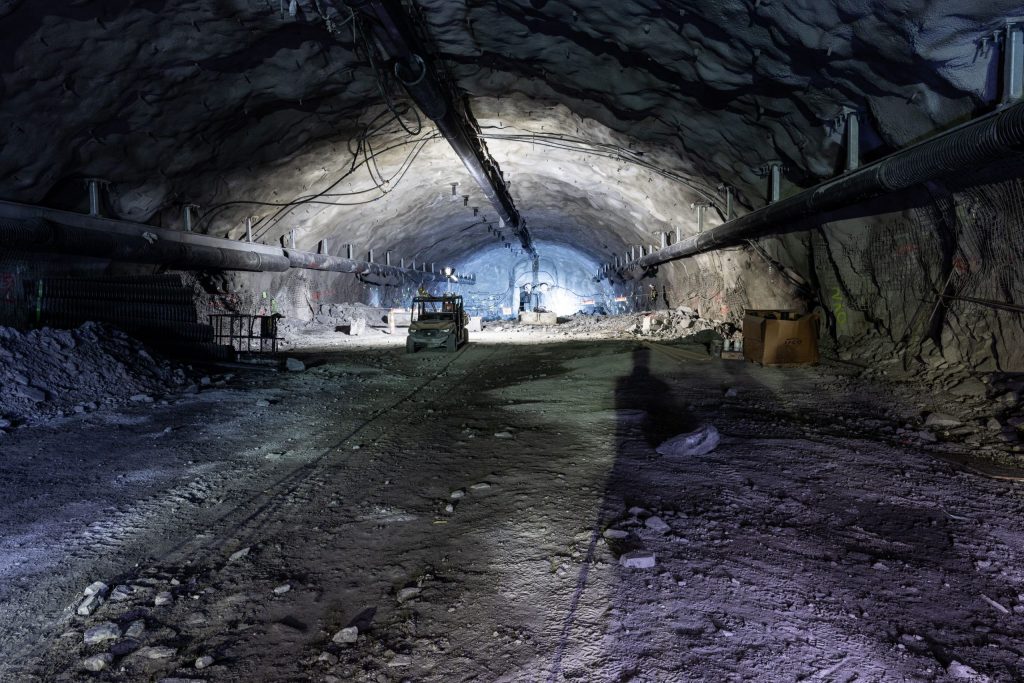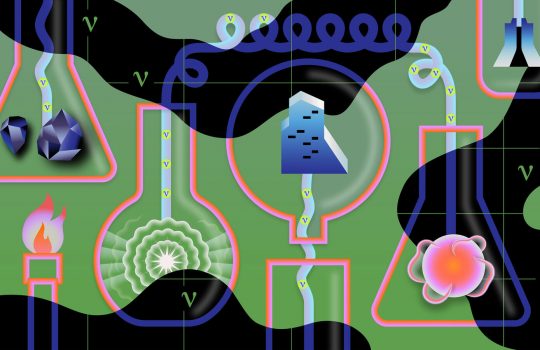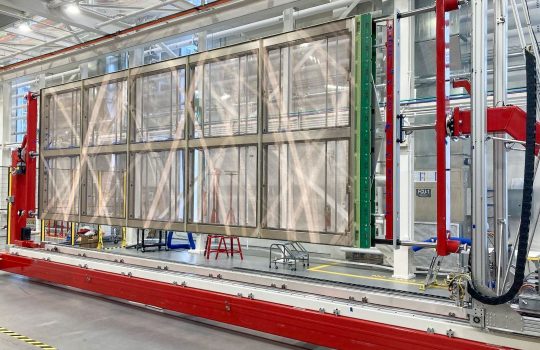
Fermilab Deputy Director Bonnie Fleming, chair of the DUNE Resources Review Board. Credit: Fermilab
On March 30 and 31, representatives from science funding agencies around the world will meet in Lead, South Dakota, to view the progress on the Deep Underground Neutrino Experiment, an international experiment hosted by the U.S. Department of Energy’s Fermi National Accelerator Laboratory.
The funding agency representatives are members of the DUNE Resources Review Board, a group of about 40 people who provide oversight of DUNE and coordination among funding agencies. They meet three times a year. This is their first meeting in Lead, South Dakota.
More than 1,400 scientists and engineers across 200 institutions in over 35 countries collaborate on DUNE to decipher the secrets of the neutrino.
“The RRB helps facilitate a strong partnership between the member countries of DUNE,” said Fermilab Deputy Director Bonnie Fleming, chair of the RRB. “DUNE is bringing together many different countries to construct a very large and complicated experiment. This requires close coordination between all these partners.”
The DUNE collaboration focuses on studying subatomic particles known as neutrinos. They may hold the answers to some of the biggest open questions in physics, such as why our universe is made of matter and how neutron stars and black holes are formed.
Construction has begun on DUNE particle detector components as well as the Long-Baseline Neutrino Facility, which will provide the space, infrastructure, and neutrino beam for the experiment. Fermilab, located in Illinois, will house the DUNE near detector and provide the particle beam. The neutrinos will travel 1,300 kilometers (800 miles) straight through Earth to the Sanford Underground Research Facility in South Dakota. There the DUNE far detector —located 1.5 kilometers (about a mile) below the surface — will catch neutrinos and unveil their mysterious behavior.
“Typically, the RRB meetings are held at Fermilab,” Fleming said. “We wanted to take the opportunity to bring the RRB members to SURF to let them see the facility and the place where the DUNE far detector will be.”
At SURF, the excavation of the huge underground complex for LBNF is about 60% complete. Construction crews have been hard at work carving out the extensive network of tunnels and caverns, which will cover about the size of eight soccer fields when complete. Two of the three caverns will be about 28 meters (92 feet) tall. They will provide space for four enormous detector modules that will be filled with a total of 70,000 tons of liquid argon, a highly stable element ideal for studying neutrino interactions.

Excavation of the tunnels and three large caverns for the DUNE detector in South Dakota is more than halfway complete. Credit: Photo: Matthew Kapust, Sanford Underground Research Facility
Work on components for the first two detector modules is moving forward at a rapid pace. DUNE members around the world have been busy building and testing prototypes of the underlying detector technology. The mass production of components for the first detector module has begun. They will be shipped to SURF and lowered underground. In the caverns, they will be assembled piece by piece — in a manner akin to putting together a ship in a bottle.
“The excavation is going beyond expectation, paralleled by similar progress in the testing and building of the far detector modules,” says DUNE co-spokesperson Sergio Bertolucci, former director of research at CERN and RRB member. “Two years from now, SURF will see a team of enthused engineers, technicians and physicists building this big ship in a bottle.”
During the meeting, which will take a hybrid format, the RRB members will receive updates on the status of the project and coordinate tasks. RRB members joining onsite will receive a tour of the excavation site as well.
Fermi National Accelerator Laboratory is supported by the Office of Science of the U.S. Department of Energy. The Office of Science is the single largest supporter of basic research in the physical sciences in the United States and is working to address some of the most pressing challenges of our time. For more information, please visit science.energy.gov.



